Hey all,
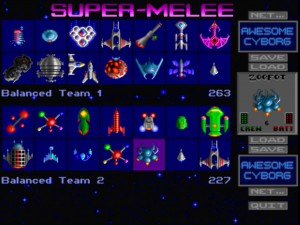
Sometimes the small, quick ships are more dangerous than the larger, more powerful ships. But not always.
Today is a very, very special day. It is the day that I am going to give a full-blown review to the game that got me hooked on games: Star Control 2! This game roped me into what would become my greatest passion. This game made me a gamer. It has everything: action, adventure, suspense, a hot(?) alien sex scene, and some of the wittiest dialog to come out of a video game. I replayed it recently and had a blast.
The copy of the game that I played for this review is not the original version that I played way back in 1992. This version, renamed The Ur-Quan Masters for trademark reasons, was created from the source code released in August 2002 by developer Toys for Bob. This version is a blend of components from the original PC game, additions made in the 1994 3DO port (such as spoken dialog), and enhancements from the open source community at SourceForge.
Star Control 2 is an adventure/action/role-playing game developed by Toys for Bob and published by Accolade. The game is broken down into two parts: the Super-Melee, where the players choose a fleet of ships and tests his or her mettle against another human or against the computer; and the adventure mode, in which the player mines minerals, commissions new ships, and interacts with over a dozen alien species in an attempt to overthrow the evil Ur-Quan masters. Let’s start by examining the Super-Melee mode.
Getting Stuck in a Super-Melee
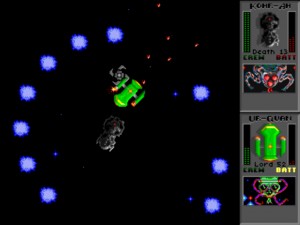
Sometimes the graceful space battles degrade into the two ships ramming each other and blasting away.
Super-Melee is all about ship-to-ship combat. Before the battle begins, each player builds a fleet to their liking out of any combination of the 25 ships available. Each species has a particular battle philosophy which determines the type of ship that they deploy. For instance, the honor-bound Yehat fly Terminator ships that fire dual machine guns backed up by a shield system that makes them deadly close range fighters. The Earthlings, on the other hand, prefer to keep the enemy at arm’s length, deploying Cruisers which fire off homing missiles and have a defensive laser system that can shoot down enemy projectiles. Each ship has its own characteristics including speed, turning rate, crew (think hull integrity), energy generation rate, as well as a primary weapon and a secondary ability. It makes for a lot of variety in the battles.

The Mycon ship has gained speed from a planetary slingshot, and can now put its long-range weapons to use against the powerful Chmmr Avatar.
Once you choose your fleet, you battle the enemy’s fleet one ship at a time. You choose a ship and the enemy chooses and you go at it, firing off nuclear missiles, spinning blades, super-heated plasma and so forth until someone explodes. The loser of the battle then chooses the next ship to send into combat. This continues until one player has lost all of their ships, at which point the match is over. Combat takes place in a wrapping 2D plane with a backdrop of stars and the occasional asteroid to disrupt ships’ momentum. In the “center” of the arena is a planet with a minor gravity well, causing nearby ships to fall toward it quickly. Some ships can even benefit from doing a “slingshot” maneuver by flying close to the planet, thus gaining considerable speed from the planet itself, often with more velocity than the ship’s engines can muster.
The variance in the ship match-ups makes this mode quite fun. It plays a bit like competitive asteroids… on steroids. Some of the match-ups are one-sided, but because most ships cannot repair themselves, even damaging a more powerful opponent as the underdog can allow you to finish them off with your next ship. Plus, each ship has a point-value, so players can declare a limit to fleet strength before the start of the game as well.
“See the Galaxy,” they said.
While the Super-Melee mode is fun, especially when playing with a friend, what makes the game truly memorable is, in my humble opinion, the adventure mode. The player takes the role of a starship captain in the wake of an interstellar war between two factions, the Alliance of Free Stars (the good guys) and the Ur-Quan Hierarchy of Battle Thralls (the bad guys). You’ll mine minerals, fight battles, converse with aliens, and perhaps even (spoiler alert!) crush the Ur-Quan!

Space... the final frontier. Except for HyperSpace... and QuasiSpace. I'm not sure how those fit into the paradigm.
You are special. And so is your flagship. It is quite the beast of a vessel; much larger than any other ship that you’ll come across. It also has numerous slots for a variety of modules to be installed that each affect the properties of the ship both in and out of combat. You may choose to build more crew quarters so your ship can take more of a beating, or defense systems to shoot down incoming projectiles, or my personal favorite, bigger guns.
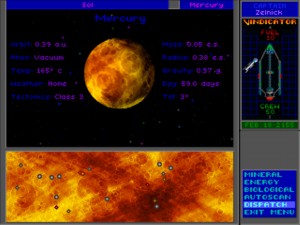
Once in orbit, you can see if the planet has minerals to mine, biological specimens to collect, or energy signatures (plot elements). Oh, and also how likely it is that your lander will be destroyed.
In order to buy those extra powerful Hellbore Cannons you want though, you’ll need to get your hands dirty and acquire some resource units (RUs). You can either collect them off remains of your enemies’ ships, or you can land on planets and mine minerals (while enduring the hazards of planetary exploration). Typically, you’ll find yourself mining heavily for the first third of the game. Then the game will shift and you’ll find yourself engaging more enemies and advancing the plot rapidly.
I think the mineral gathering portion of the game could be shorter, though there is something to be said for the joy of lazily collecting minerals. Once you get enough fuel capacity to go across the galaxy the game picks up. I just wish it happened a little sooner and that the early stages of the game weren’t so tenuous. It’s easy to get caught without an escort and get chewed to pieces by wandering, self-replicating probes.
Most of the plot in the game is told through the player’s interactions with the myriad alien races of the quadrant. As you explore the galaxy, you encounter numerous alien species, each with their own personality, agenda, and font face. (Yes, each alien species is personified in a font!) Most of the aliens you’ll encounter are quirky in one way or another. The Pkunk are fraudulent psychics (most of the time), the Ilwrath are nasty spider-things that are always dying to stalk their prey, and the eponymous Ur-Quan are giant caterpillars convinced that the only way for them to protect themselves is to enslave every sentient race in the galaxy.
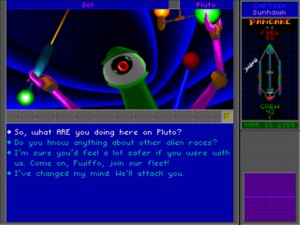
You'll have to figure out how to deal with each alien species. Sometimes you'll need to do something nice. Other times you'll need to make a threat.
Some will try to kill you on sight, others will join you regardless of how hopeless your cause is, some want to mess with you, and some just want to trade with you. The conversation trees are quite impressive for the time period, and your decisions about how to interact with aliens will greatly affect how they treat you. You’ll learn about their history, their motivations, and often what you can do to sway them to join the good guys (or even destroy themselves).
The game’s dialog balances humor and tragedy magnificently. I don’t want to spoil plot too much so I won’t go any further. Let’s just say that it is grand in scope and absolutely littered with references to classic science fiction stories.
Technically the game held up very well. The graphics were absolutely stellar for 1992 and they are still good in 2012. Sure, the menu font is a bit blocky and some of the ship animations (even with the addition of the 3DO version graphics) aren’t very smooth, but it didn’t detract from my enjoyment. This version also comes bundled with a number of re-mixes of the music, which I turned off for the most part, favoring the original tunes.
One addition to this version that I found very striking is the voice acting. There wasn’t any on the original flock of floppy disks that the game came on, but every alien is fully voiced in this new version. I’m not really sure how I feel about it. On the one hand, it’s nice that the player can sit back and listen to the dialog. However, I have to admit that I was disturbed by a few of the performances, most particularly the Yehat and the Shofixti, who exhibit extremely stereotypical and thick Scottish and Japanese accents, respectively. I would say that these performances are distasteful at the least. But, most of the performances are well done and add to the game.
Due to the age of the game it lacks some of the features that make modern adventures more accessible and easier to manage. Keep a notepad and pen handy: there is no quest log, so whenever an alien tells you the coordinates of their home world or the location of some artifact, you had best write it down. You can cheat a little bit using the Ultronomicon, a solid resource for the game.
Using the star map is also somewhat clumsy as you have to move a cursor over each individual star in order to see the star’s name. This was not so much of an issue with the original game as it came with a star map that had all of the constellations labeled for reference. (This was also used as copy protection, and consequently is how I learned how to read coordinates).
Also, I should mention that the game is quite hard. It’s easy to be overzealous and die in the opening act of the game. It’s also easy to be too cautious and run out of time. Yes, you will lose the game if you haven’t won after a certain amount of time.
These issues aside, Star Control 2: The Ur-Quan Masters is a wonderful game. I highly recommend it to anyone who is a fan of space operas, 2D space combat games, or who just wants some great dialog.
But I haven’t even gotten to the best part: the game is completely free. Seriously. You can head over to SourceForge and download it legally and for free right now. What have you got to lose? You owe it to yourself to play one of the greatest games of all time.
Just don’t say I didn’t warn you when you get enthralled in the story and addicted to Super-Melee.
Cheers,
S
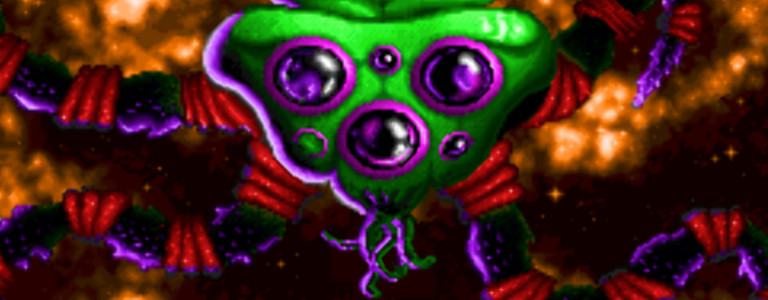
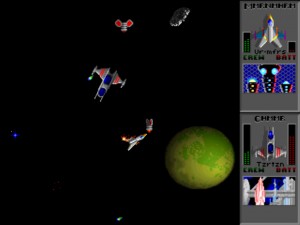
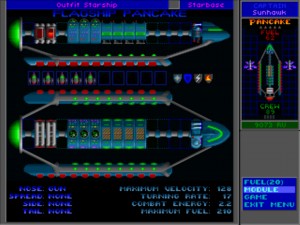
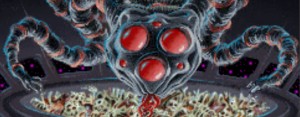
Comments
Chmmr said: 4 August 2017 at 18:36
Amen.
Best game now and forever.